Going Beyond Cottagecore Aesthetics: Social Implications
A little thatched-roofed cottage in the middle of nowhere, lavish afternoon teas in a garden surrounded by homegrown plants and vegetables, sounds dreamy, right? The Cottagecore aesthetic encompasses all of that and much more.
Amidst all the ruffles, flowy long dresses, reading poetry like you are the main character, manifesting, learning about the power crystal stones inhabit, baking deliciously indulging banana bread loaves (the list of proposed pastime activities goes on endlessly), a more contentious side lies in the Cottagecore trend.
In our first part on this topic, we have already expounded upon the definition as well as where the aesthetic is historically rooted, and why it suddenly rose in popularity. So, if you need a quick refresher or missed this one skim through it over here to get the full picture.
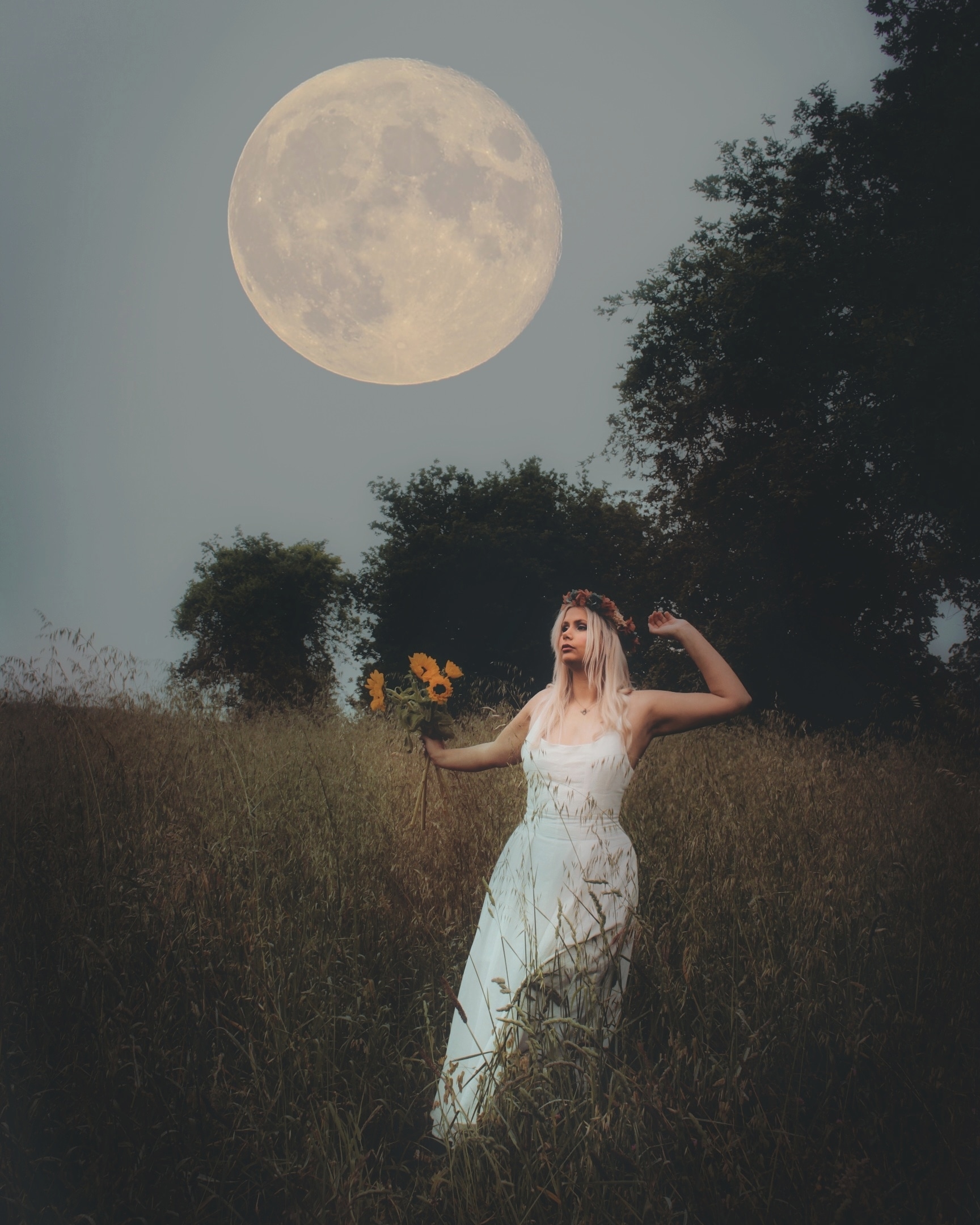 @thebunnyboudoir in a gorgeously transcendental setting. As a horror fan, she frequently incorporates these kinds of spaces.
@thebunnyboudoir in a gorgeously transcendental setting. As a horror fan, she frequently incorporates these kinds of spaces.
As beautiful and awe-inspiring the content we see online is, this aesthetic sadly has its fair share of negative aspects, which are widely ignored or misinterpreted especially by young Gen Z participants, who are notorious for shortly immersing themselves in hot trends whilst the hype lasts, but quickly turning to the next one shortly after, perfectly reflecting how fashion cycles currently develop to become shockingly short-lived to an unprecedented extent.
This approach culminates in an artificial desire to reinvent one’s own style literally every few weeks, so we cannot help but wonder: is this aesthetic really as wholesome, sustainable, and supportive as it seems? A hard question to answer because, after all, things are not always black and white. Therefore we will take a closer look at the other side of the coin throughout this second part in an attempt to unveil some lesser-known realities of the Cottagecore trend.
To Put It Straightforwardly, Why Is Cottagecore So White?
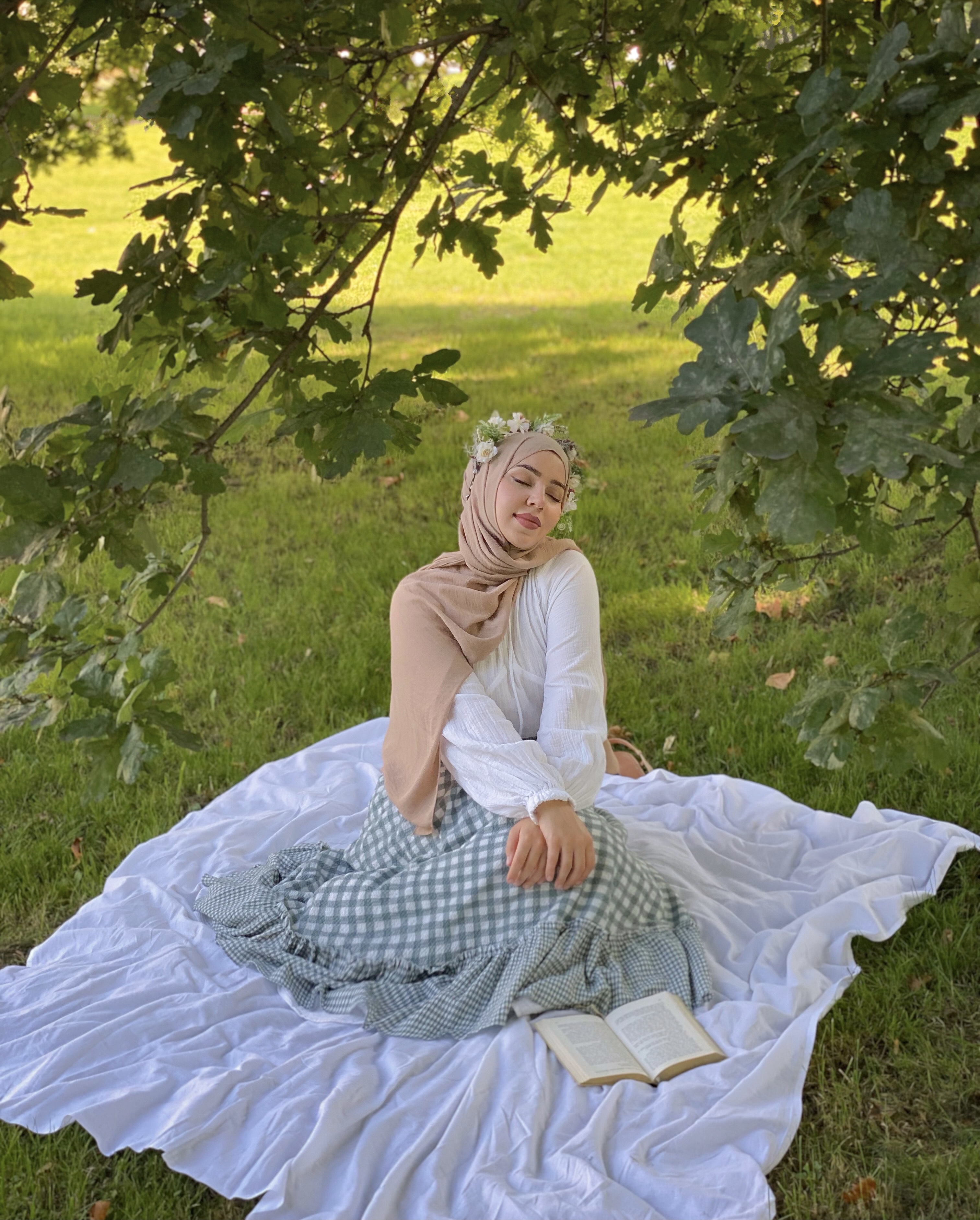 Ph. courtesy of Sinem Bahadir
Ph. courtesy of Sinem Bahadir
Sinem Bahadir aka @sinembhd is a popular Germany-based influencer, fully embracing the Cottagecore vibe. She is an inspirational, positive example of diversity. In wearing a hijab, she fiercely signalises pride in her heritage, permeating all unspoken limitations that some within the movement might want to impose. In that, Sinem's dreamy images encompass a message beyond beauty. Everyone can partake in any kind of aesthetic, no matter their nationality, religious belief, gender, or looks. An important message to convey, indeed.
To start this off, let us tackle the most prominent and heatedly debated matter. A huge lack of diversity is more than apparent within the digital movement, to a point that a controversial debate on whether Cottagecore is inherently racist erupted. This issue has been widely discussed in public discourse, both in a myriad of articles and YouTube videos. The first thing appearing on the screen when typing in Cottagecore, be it on any social media app or simply Google, is a bunch of prototypically beautiful, young, slim, white women standing in countryside fields, wearing vintage-inspired attire. Is this due to the respective platform’s algorithm favouring white people’s content on account of their programming, or are there actually so few people with other ethnicities and body shapes embracing the aesthetic?
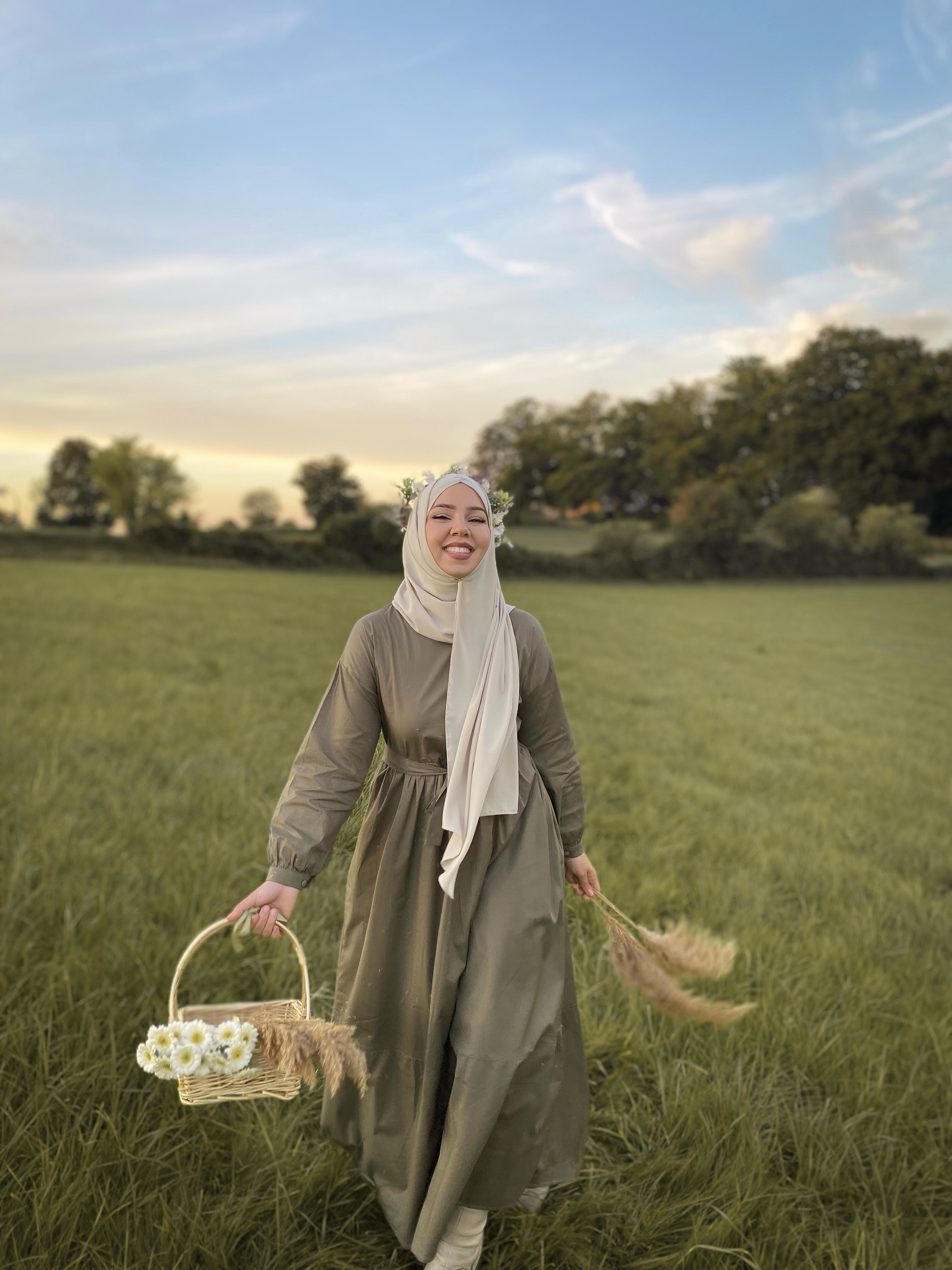 @sinembhd sees herself as a visual storyteller, hence indicating to her following that there is more to pictures than meets the eye. Partaking in the Cottagecore aesthetic is certainly not limited to the British landscape. Living in Germany, she showcases that beautiful places fit for retreat into nature can be found anywhere in the world. We highly recommend taking a look at her feed. Prepare to get lost in a dreamy world of truly magical photographs, displaying an alternative and very unique take on Cottagecore. With Sinem you are in for a treat, that is for sure! (Ph. courtesy of Sinem Bahadir)
@sinembhd sees herself as a visual storyteller, hence indicating to her following that there is more to pictures than meets the eye. Partaking in the Cottagecore aesthetic is certainly not limited to the British landscape. Living in Germany, she showcases that beautiful places fit for retreat into nature can be found anywhere in the world. We highly recommend taking a look at her feed. Prepare to get lost in a dreamy world of truly magical photographs, displaying an alternative and very unique take on Cottagecore. With Sinem you are in for a treat, that is for sure! (Ph. courtesy of Sinem Bahadir)
What is safe to say is that algorithms are created to promote a specific idealised, preferably Eurocentric beauty standard. This has long been common knowledge, though TikTok made it blatantly clear to all its users since it is so obviously repetitive when it comes to outward appearances of the chosen creators that ultimately land on a for you page. Studies suggest that the app rates videos for potential success based on the attractiveness of those in it by means of a beauty assessing algorithm. A machine is able to identify how far an individual’s measurements of certain landmarks of the face deviate from an expected average. The algorithm then measures and evaluates the degree of fit with the previously established ideal, thereby providing a kind of ‘beauty score’. It goes so far as to even pick up a person’s skin texture, lowering Koinophilia (non-normative traits for an attractive face that is) by unevenness, discolouration, and wrinkles.
So, as we could see so far, Cottagecore seems to have a visible lack of people of colour. The issue becomes even more problematic when keeping in mind the negative implications of land ownership and its connection with the slave trade in the British Isles, which was only ended in 1833 by the Slavery Abolition Act. The historical background comes into play, as the aesthetics’ style, especially in clothing and accessories, is vastly reminiscent of bygone eras. Prairie dresses, fancy bonnets with attached lacy bows, Victorian-inspired parasols, gloves, and everything we would associate with the time periods it aims to imitate and take inspiration from. Is it just a harmless dress-up, a true passion for original vintage style, or a deliberate attempt to undermine people of colour, by consciously signalising a harsh exclusivity of the look? To be candid, the reasons behind every individual's choice of fashion can hardly be overgeneralised without being presumptuous. Seeing that most of them are either very young or truly submerged in rural seclusion, holistically embracing a sustainable lifestyle with competence and awareness. In the end, everyone engaging should be careful not to idealise the past while forgetting what context the time period indicated was embedded in.
Escapism At Its Best – Content Polished To Perfection Distorts The View Of Secluded Country Life Realities
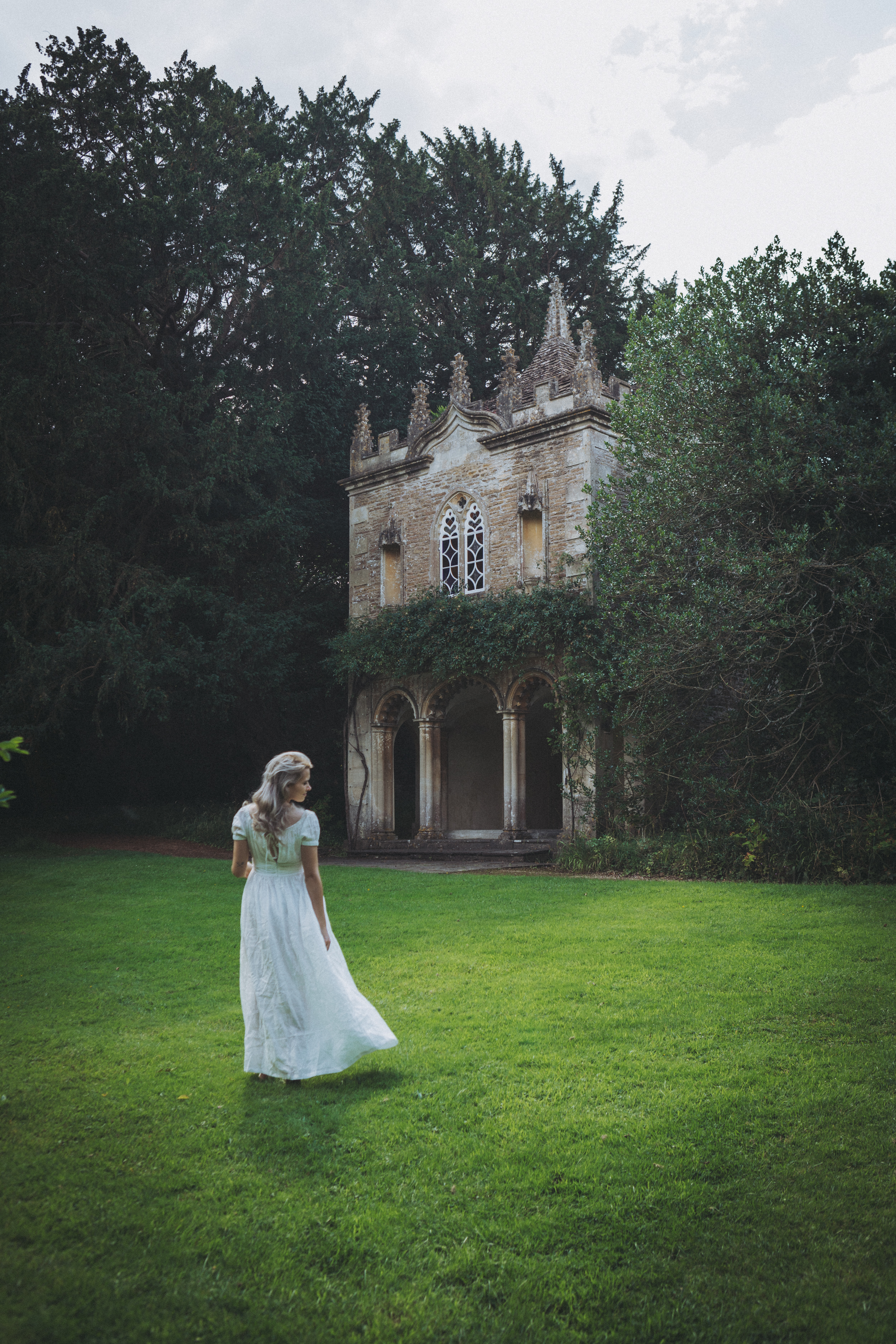 @monalogue, the queen of Cottagecore and her husband @aaron.etc perfected the art of capturing awe-inspiring moments in naturalistic environments, suspending the spectator's reality for a fleeting moment. (Ph. Aaron Gibson)
@monalogue, the queen of Cottagecore and her husband @aaron.etc perfected the art of capturing awe-inspiring moments in naturalistic environments, suspending the spectator's reality for a fleeting moment. (Ph. Aaron Gibson)
A good bunch of those engaging in Cottagecore by publishing their content on social media propagate a highly idealised idyllic landscape, which in fact is far from reality. Sure, the British countryside is breathtakingly beautiful, but living in a secluded cottage takes much more than simply dressing up and sipping some tea in your garden. Not acknowledging the hardship of rural life and work, acknowledging what it actually takes to obtain a cottage is seldom shown. The pictures convey a drastically polished version of what is an escapist fantasy.
In a time when owning property becomes more inaccessible due to constantly increasing market prices, young adults strive for independence from sometimes ridiculously brazen landlords. Their demands and rent increase seemingly come under little state regulation and, especially in big cities, the situation appears to get only worse with time passing. Scoring an apartment in an acceptable area in London feels like mission impossible for youngsters with limited money recourses. Even if you are lucky to claim an apartment, suffering damages or problems with the property is often met with landlord’s inaction, a well-known issue, as both tenant and landlord know that there will always be plenty of people eager to move in instead never mind the state of it. This situation strengthens the inherent desire to own property, the land is significantly cheaper, after all.
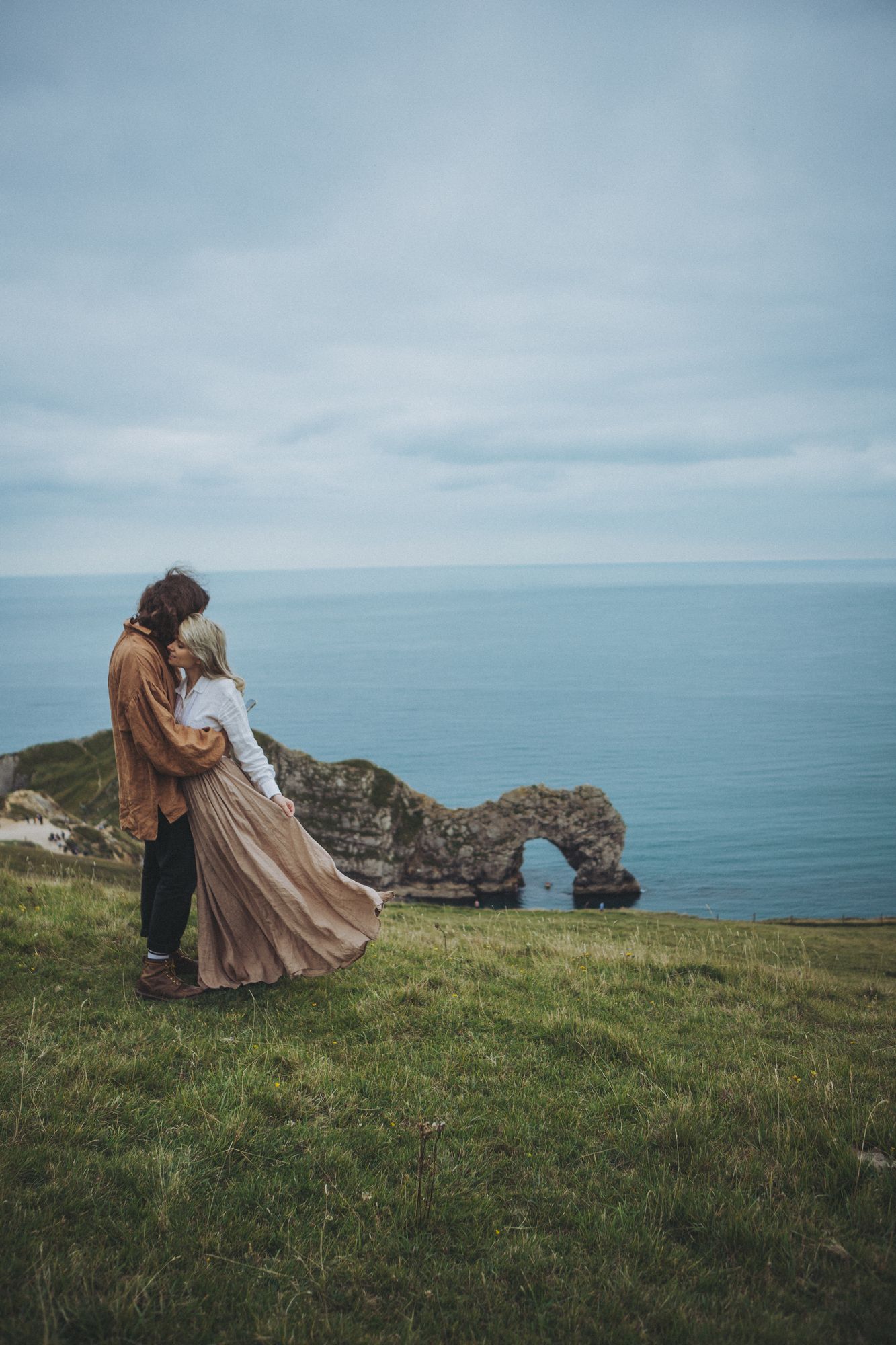 Like a scene straight out of Poldark! Those of you who have read the first part of this series should be familiar with these two. Ramona and Aaron have been in the game for many years by now, though they are not pretending to indulge in a utopic world, but provide informative insights into what obtaining a cottage in the countryside actually demands. (Ph. Aaron Gibson)
Like a scene straight out of Poldark! Those of you who have read the first part of this series should be familiar with these two. Ramona and Aaron have been in the game for many years by now, though they are not pretending to indulge in a utopic world, but provide informative insights into what obtaining a cottage in the countryside actually demands. (Ph. Aaron Gibson)
Ramona Jones aka @monalogue with the aim of sharing her expertise and personal experiences released a book called ‘Escape Into Cottagecore: Embrace Cosy Countryside Comfort in Your Everyday’, in which she openly concedes that the idea of Cottagecore is evoking “a soft, fairytale world”. Notwithstanding, she also opens up about mental health and her own struggles. Dealing with sensory and social issues as a child, staying at her grandparents in the countryside felt like a safe place, a “haven from the rest of the world” where she could be herself, free of any judgement or constraints. This early on kindled her love of nostalgia and rustic life. It just so happens to have become a trend recently. Ramona successfully passes on her knowledge, personal recommendations, alongside tips and tricks ranging from herbology to mindfulness. It is true that you do not necessarily have to live in the British countryside, cut off from any kind of technology and isolated from everyone else, to experience what the movement is about, visually or in a deeper sense in its core values and aims. This brings us to the next conspicuousness: technology.
As Contradictory As Its Oxymoron Name – Is It Detoxed Relaxation If Every Step Is Filmed And Put Online?
The paradox is more than clear, the Cottagecore trend champions anti-modern attitudes towards everything that is wrong with our fast-paced city lives and hustle culture, but it seems to primarily exist and thrive in modern spaces through public sharing on social media and online platforms. Maybe though, that antithesis is one of the aesthetic's greatest strengths. Rather than demanding unrealistic attempts to completely ditch modern devices and technological progress, it appears to encourage a reassessment of modern values. It may even offer a bridge between the past and a more sustainable future. As inherently social beings, humans completely shutting themselves away, in the long run, would actually be an unnatural thing to do. Finding like-minded people online to connect with in times when socialising in real life became a struggle, bears a huge potential for some.
Aesthetics intentionally inspire an emotional response, often instilling a sense of calmness and evoking a soothing effect within us. Due to our unlimited access to all forms of art on demand, we increasingly crave beauty and have developed a longing for the picturesque, thereby trying to incorporate it into literally everything. It becomes problematic however when recorded moments get fixed to such a degree that they are not accurately representative of reality and are amended to what we want them to be, rather than what they really are. Yet, there is a distinction between dramatically edited posts, where alterations are noticeable at first glance, and the currently favoured approach of editing to a lesser degree. This quickly leads to a coincidence of reality and fiction, blurring the lines further and further, while distorting the views on what is shown. It gets dangerous if users fail to further reflect upon the content they engage with.
An Outlook
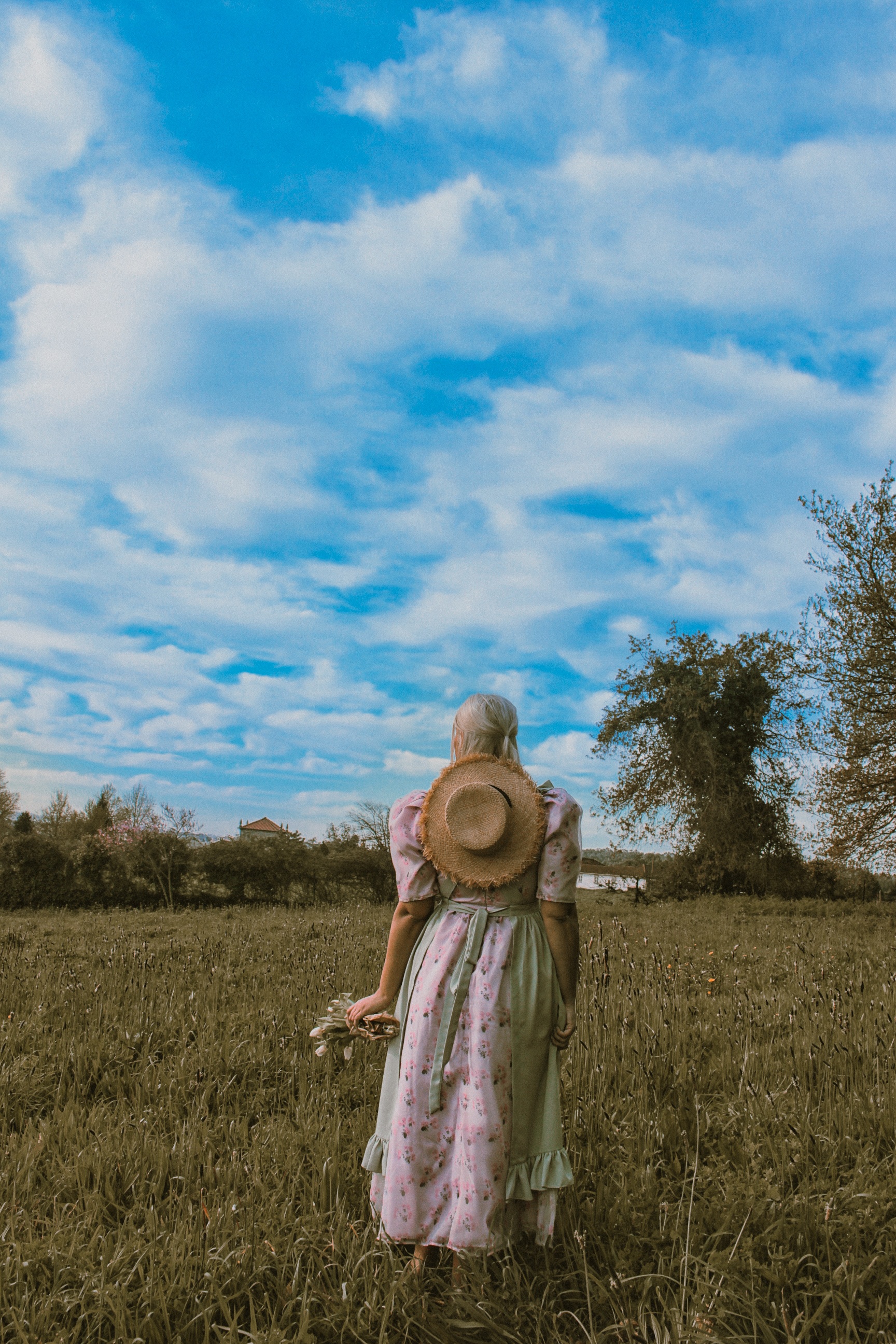 @thebunnyboudoir, shown in everything that makes a Cottagecore enthusiast's heart beat a little faster. Floral patterned ruffle dress, pinafore, a straw hat, and of course some fresh flowers. (Ph. courtesy of Melody Cardoso)
@thebunnyboudoir, shown in everything that makes a Cottagecore enthusiast's heart beat a little faster. Floral patterned ruffle dress, pinafore, a straw hat, and of course some fresh flowers. (Ph. courtesy of Melody Cardoso)
Despite the many downsides, what has been exemplified here shall not overshadow the various positive ways Cottagecore has actively promoted positive activities and values in the public eye. Sustainability, taking globalisation seriously, freedom of heteronormative norms, mindfulness, meditation, looking inwards, paying attention to personal well-being, educating yourself through reading, anti-capitalism, challenging the belief that all progress is good, and so much more – to an extent that listing everything here would certainly go beyond the scope.
In the context of a global pandemic a little dose of escapism should not necessarily be a bad thing, it may very well have helped some to overpass the time between amplification and easing of restrictions. Many activities are congruent with traditional housewife work; however, not everyone seems to be fully aware of the negative historical implications. Ultimately, the motto should be: 'vintage style, not vintage values '.
In the long run, it can indeed become a lifestyle, existing outside the internet or simultaneously without being dominated by it.
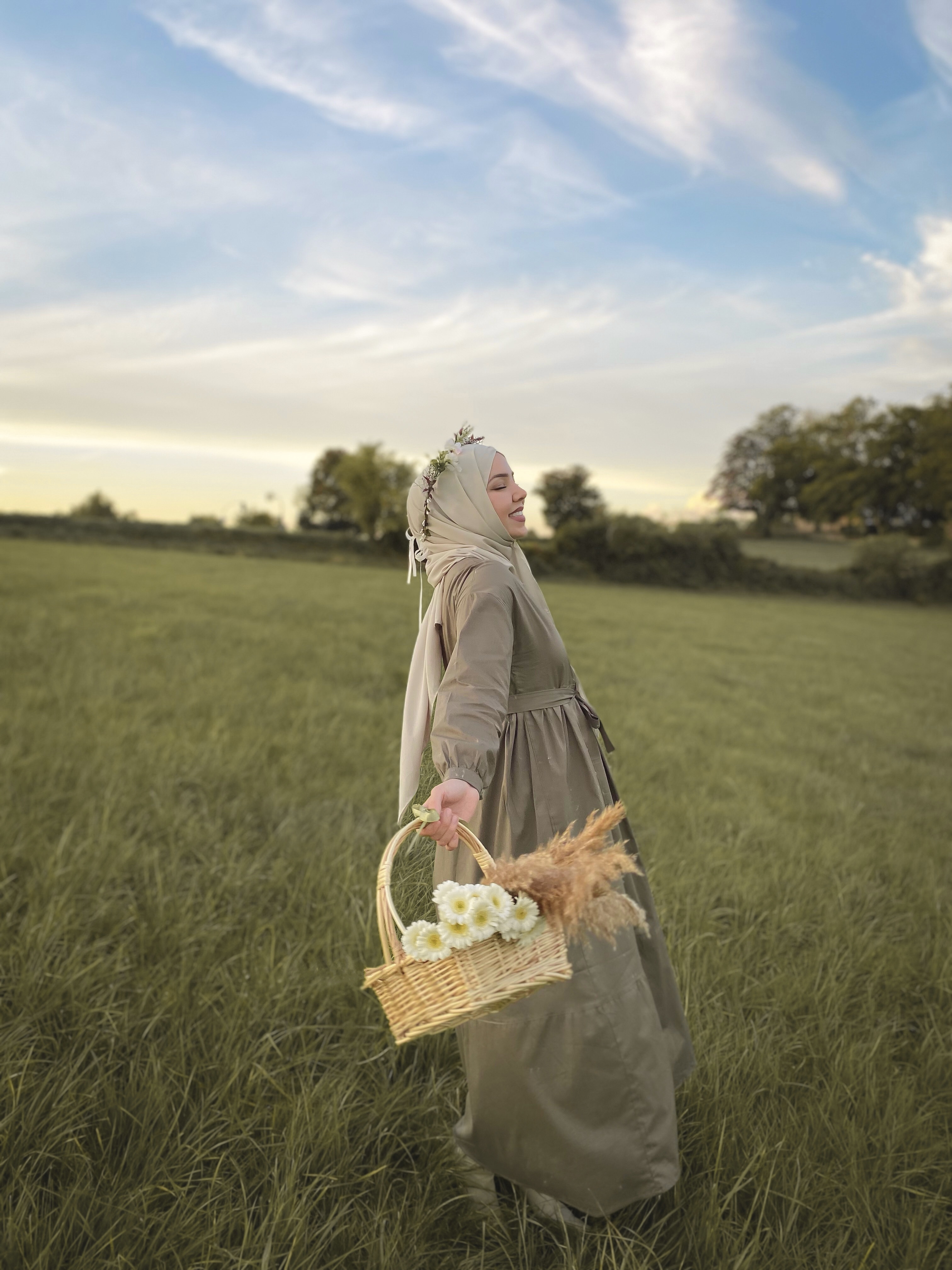 Ph. courtesy of Sinem Bahadir
Ph. courtesy of Sinem Bahadir
This article is by no means supposed to ridicule anyone committed to this movement, but rather an attempt to raise awareness on some less discussed shortcomings which are easy to dismiss and overlook. All content creators featured throughout this article are enlightened and knowledgeable about the aesthetic they engage in, and they are a truly delightful addition to the scene with their stunning visuals.
Those who are still most prone to perfunctory misconceptions are teenagers, especially those who just recently discovered Cottagecore. A huge contributor to this is the set limitations of some social media platforms. Instagram has been around for quite some time now, the difference to TikTok though lies in the extent of content that can be shared. On Instagram, each creator can elaborate on the visuals in lengthy texts underneath. On TikTok, instead, the time span for videos was limited to merely 15 seconds until most recently, when the company decided to bulk it up to 60 seconds. Users are therefore provided with a very narrow time frame to convey a message beyond the perceptible. Quite a challenge! The majority of people within the community certainly mean no harm, nor should any bad intentions be at play. With everyone having the recourses to further research the topic straight from their mobile, it lies in everyone’s responsibility to do so by means of trustworthy sources before immersing head over toes into something new, unaware and in ignorance.
Follow us on Instagram @ fashionsfinestuk

